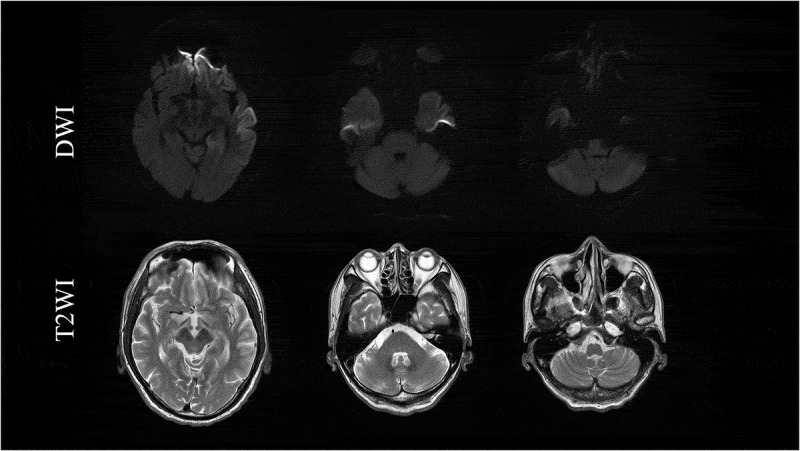一例痉挛性麻痹患者在发病9年后最终被诊断为V180I遗传性克雅氏病。
IF 16.4
1区 化学
Q1 CHEMISTRY, MULTIDISCIPLINARY
引用次数: 3
摘要
以朊蛋白基因180密码子突变(V180I gCJD)为特征的遗传性克雅氏病(gCJD)是日本最常见的克雅氏病,但在欧洲和美国仅报道了少数病例。它的临床特征是发生在老年人中,表现为缓慢进展的痴呆,尽管它通常比散发的CJD表现出较少的小脑和锥体症状。在此,我们报告一例V180I型gCJD患者,其最初表现为缓慢进行性痉挛性麻痹,脑脊液(CSF)和磁共振成像(MRI)均无异常。他的症状逐渐加重,9年后,他表现出更典型的CJD特征。弥散加权MRI显示皮质回高强度信号,脑脊液中14-3-3蛋白和总tau蛋白明显增加,但实时震颤诱导转化试验呈阴性。虽然时间进程与Gerstmann-Sträussler-Scheinker疾病比CJD更一致,但基因检测显示V180I gCJD。这是首个V180I型gCJD患者最初表现为痉挛性麻痹的报告,也是首个揭示从发病到皮层功能障碍发展到MRI和CSF异常检测需要9年时间的报告。总之,以缓慢进行性痉挛性麻痹为表现的老年患者应筛查V180I型gCJD。本文章由计算机程序翻译,如有差异,请以英文原文为准。



A patient with spastic paralysis finally diagnosed as V180I genetic Creutzfeldt-Jakob disease 9 years after onset.
ABSTRACT Genetic Creutzfeldt-Jakob disease (gCJD) with a mutation in codon 180 of the prion protein gene (V180I gCJD) is the most common form of gCJD in Japan, but only a few cases have been reported in Europe and the United States. It is clinically characterized by occurring in the elderly and presenting as slowly progressive dementia, although it generally shows less cerebellar and pyramidal symptoms than sporadic CJD. Here, we report a patient with V180I gCJD who initially presented with slowly progressive spastic paralysis with neither cerebrospinal fluid (CSF) nor magnetic resonance imaging (MRI) abnormalities. His symptoms progressed gradually, and after 9 years, he displayed features more typical of CJD. Diffusion-weighted MRI revealed high-intensity signals in the cortical gyrus, and there was a marked increase of 14-3-3 protein and total tau protein in the CSF, but he was negative for the real-time quaking-induced conversion assay. Although the time course was more consistent with Gerstmann-Sträussler-Scheinker disease than CJD, genetic testing revealed V180I gCJD. This is the first report of a patient with V180I gCJD who initially presented with spastic paralysis, and also the first to reveal that it took 9 years from disease onset for cortical dysfunction to develop and for MRI and CSF abnormalities to be detectable. In conclusion, we should screen for V180I gCJD in elderly patients presenting with slowly progressive spastic paralysis.
求助全文
通过发布文献求助,成功后即可免费获取论文全文。
去求助
来源期刊

Accounts of Chemical Research
化学-化学综合
CiteScore
31.40
自引率
1.10%
发文量
312
审稿时长
2 months
期刊介绍:
Accounts of Chemical Research presents short, concise and critical articles offering easy-to-read overviews of basic research and applications in all areas of chemistry and biochemistry. These short reviews focus on research from the author’s own laboratory and are designed to teach the reader about a research project. In addition, Accounts of Chemical Research publishes commentaries that give an informed opinion on a current research problem. Special Issues online are devoted to a single topic of unusual activity and significance.
Accounts of Chemical Research replaces the traditional article abstract with an article "Conspectus." These entries synopsize the research affording the reader a closer look at the content and significance of an article. Through this provision of a more detailed description of the article contents, the Conspectus enhances the article's discoverability by search engines and the exposure for the research.
 求助内容:
求助内容: 应助结果提醒方式:
应助结果提醒方式:


